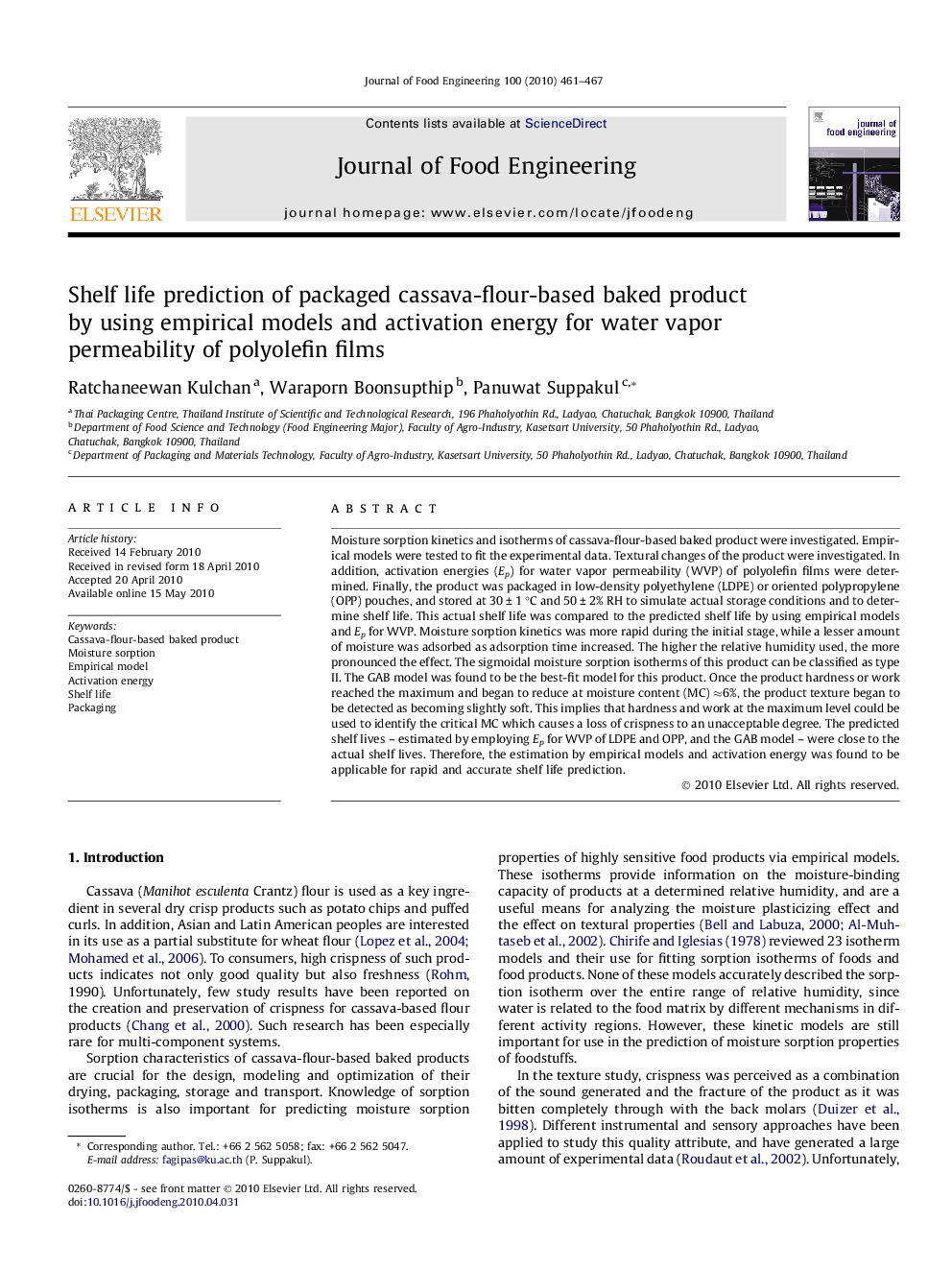| Article ID | Journal | Published Year | Pages | File Type |
|---|---|---|---|---|
| 223840 | Journal of Food Engineering | 2010 | 7 Pages |
Moisture sorption kinetics and isotherms of cassava-flour-based baked product were investigated. Empirical models were tested to fit the experimental data. Textural changes of the product were investigated. In addition, activation energies (Ep) for water vapor permeability (WVP) of polyolefin films were determined. Finally, the product was packaged in low-density polyethylene (LDPE) or oriented polypropylene (OPP) pouches, and stored at 30 ± 1 °C and 50 ± 2% RH to simulate actual storage conditions and to determine shelf life. This actual shelf life was compared to the predicted shelf life by using empirical models and Ep for WVP. Moisture sorption kinetics was more rapid during the initial stage, while a lesser amount of moisture was adsorbed as adsorption time increased. The higher the relative humidity used, the more pronounced the effect. The sigmoidal moisture sorption isotherms of this product can be classified as type II. The GAB model was found to be the best-fit model for this product. Once the product hardness or work reached the maximum and began to reduce at moisture content (MC) ≈6%, the product texture began to be detected as becoming slightly soft. This implies that hardness and work at the maximum level could be used to identify the critical MC which causes a loss of crispness to an unacceptable degree. The predicted shelf lives – estimated by employing Ep for WVP of LDPE and OPP, and the GAB model – were close to the actual shelf lives. Therefore, the estimation by empirical models and activation energy was found to be applicable for rapid and accurate shelf life prediction.
